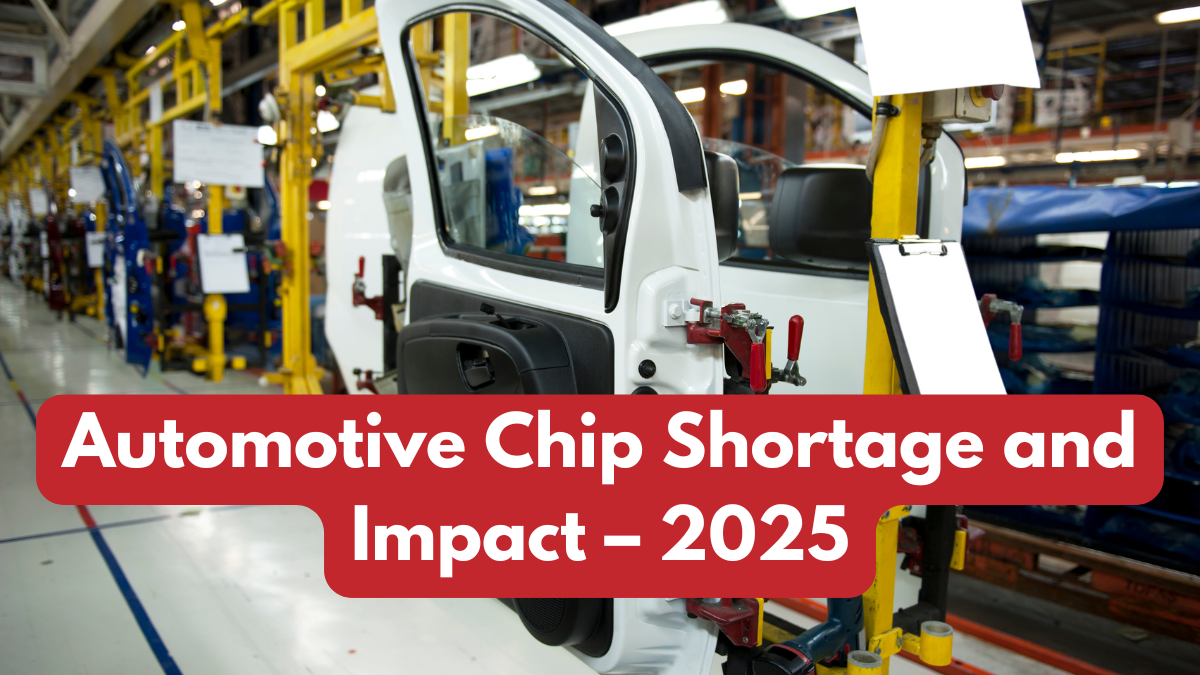The Automotive Chip Crisis India continues to send ripples through the country’s vehicle production and export sectors in 2025. Originating from global supply chain disruptions in the semiconductor industry, the shortage has triggered delays, reduced output, and unexpected cost spikes in India’s auto market.
India, a growing hub for vehicle assembly and EV manufacturing, has faced bottlenecks due to its dependence on imported chips. From two-wheelers to premium electric cars, almost every automotive segment is impacted. The chip shortage impact has not only affected vehicle rollouts domestically but has also caused challenges in fulfilling international export contracts.
With manufacturers battling uncertainty, both suppliers and buyers are reassessing their strategies in response to this ongoing semiconductor shortfall.

How the Chip Shortage is Affecting India’s Auto Sector
Automotive chips control a wide range of functions, from basic ignition systems to advanced driver assistance features. As production delays continue, Indian OEMs are forced to make difficult decisions regarding output priorities.
Some of the key impacts observed from the Automotive Chip Crisis India include:
-
Slower production of EVs and smart vehicles
-
Export delays due to unfinished units
-
Increased manufacturing costs
-
Loss of foreign client confidence
-
Short-term layoffs at select assembly lines
India’s position as a reliable exporter is being tested by the chip shortage impact, especially in markets like Africa and Southeast Asia that rely on affordable, tech-enabled Indian vehicles.
Export Data and Production Declines
The following table summarizes the output and export drop across major auto segments between Q1 and Q2 of 2025:
| Vehicle Type | Q1 Output (Units) | Q2 Output (Units) | % Drop Due to Chip Crisis |
|---|---|---|---|
| Electric Two-Wheelers | 180,000 | 124,000 | 31% |
| Compact Cars | 220,000 | 160,000 | 27% |
| Three-Wheelers | 140,000 | 95,000 | 32% |
| Auto Parts Export | $750M | $520M | 30% |
These figures demonstrate the widespread effect of the Automotive Chip Crisis India, which continues to stall recovery post-pandemic and affect year-end projections.
Government and Industry Response
Recognizing the seriousness of the issue, Indian authorities have fast-tracked efforts to localize chip production. Several government-backed semiconductor parks and fabrication units are under development to reduce future dependence.
Key actions taken to address the chip shortage impact:
-
Approval of PLI (Production Linked Incentives) for semiconductor manufacturing
-
Strategic partnerships with Taiwan and Japan for chip design
-
Allocations of emergency import licenses for priority auto firms
-
AI-based supply chain forecasting tools adopted by manufacturers
Despite these moves, it may take several quarters before meaningful results are visible. Meanwhile, automotive companies are urged to explore simplified models and software-light variants for export continuity.
What It Means for Consumers and Exporters
For Indian consumers, the Automotive Chip Crisis India translates to fewer model choices, higher prices, and longer delivery times. For global clients, the story is more complex. Many exporters are renegotiating delivery timelines or adjusting specs to match available chip inventory.
The chip shortage impact also drives:
-
A rise in second-hand vehicle demand globally
-
Shifts toward lower-tech, entry-level vehicle exports
-
Growing interest in modular designs and chip-alternate technologies
-
Reduced availability of high-end safety and entertainment features
Though temporary, these changes are redefining the auto export map and may influence vehicle design preferences for years to come.
Conclusion
The Automotive Chip Crisis India presents a sobering challenge to one of the fastest-growing auto markets in the world. While India’s ambitions in electric mobility and smart vehicle exports remain high, the chip shortage impact serves as a wake-up call for policy-makers and manufacturers alike.
With proactive industrial strategy, domestic chip manufacturing, and international collaborations, India can not only recover but emerge stronger from this crisis. Until then, flexibility and innovation remain key to navigating this disruption.
FAQs
What is causing the Automotive Chip Crisis India?
The crisis stems from global semiconductor shortages, worsened by supply chain disruptions and increased EV demand.
How are Indian auto exports affected?
Exports have slowed due to incomplete vehicles, leading to delays and missed international contracts.
Are manufacturers in India building chips locally?
Yes, several government-backed initiatives are underway to set up semiconductor fabrication units domestically.
How long will the chip shortage last?
Experts estimate partial recovery by late 2025, but full stability may take another year.
Which vehicle segments are most affected?
Electric vehicles, compact cars, and high-tech vehicle components are most impacted by the shortage.
Click here to learn more